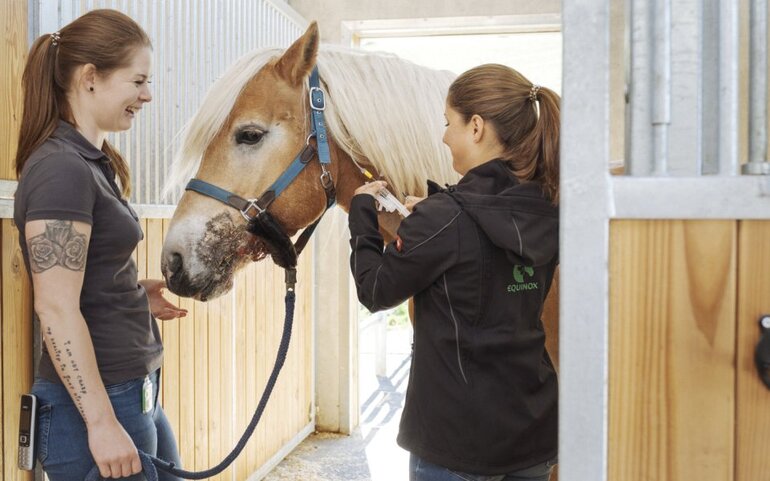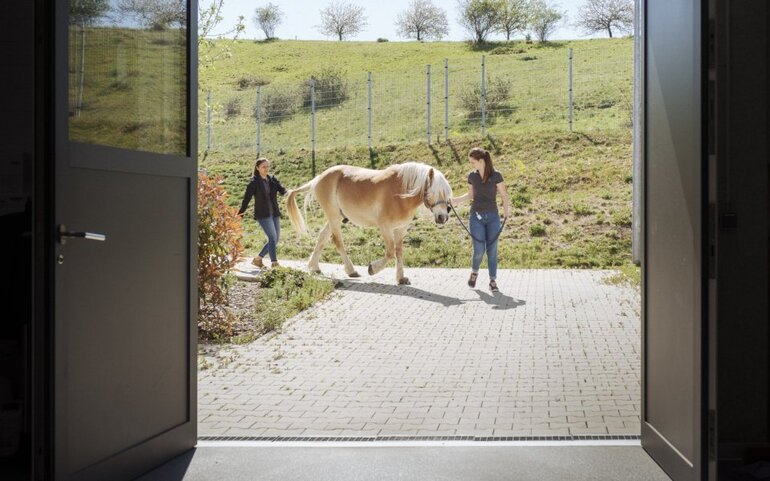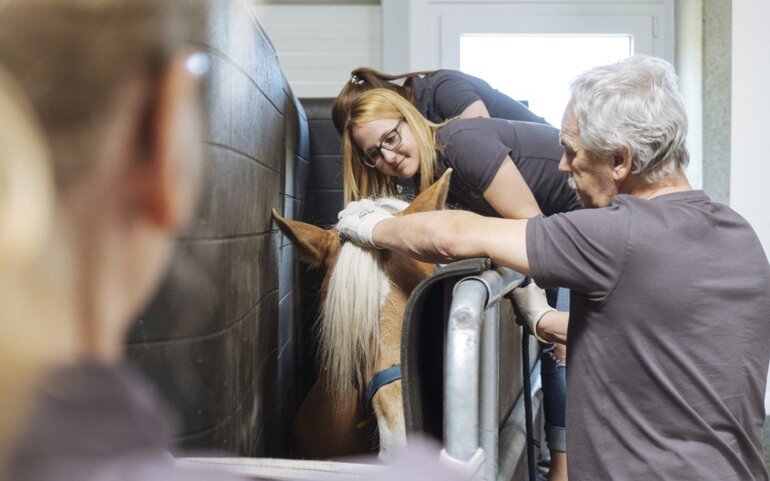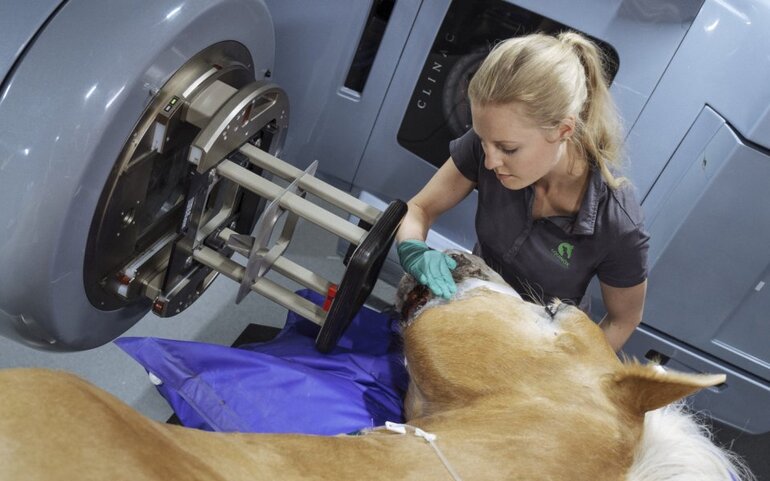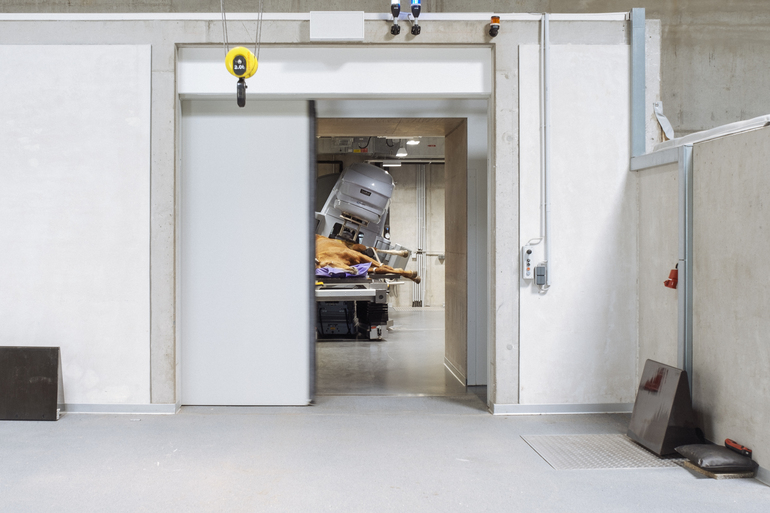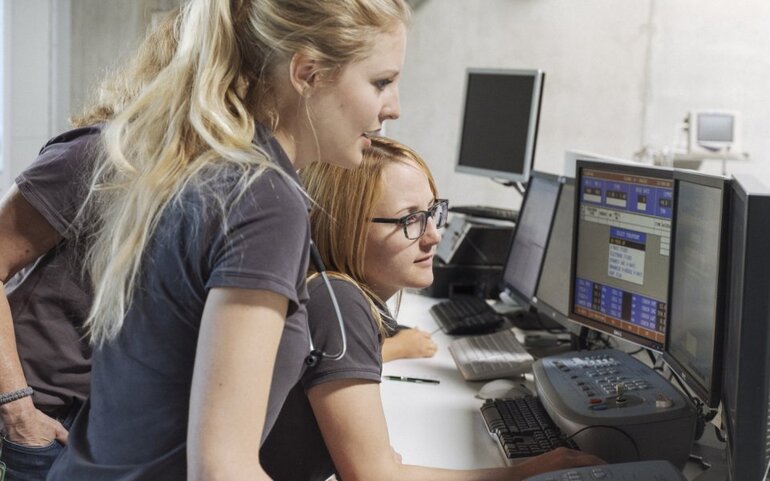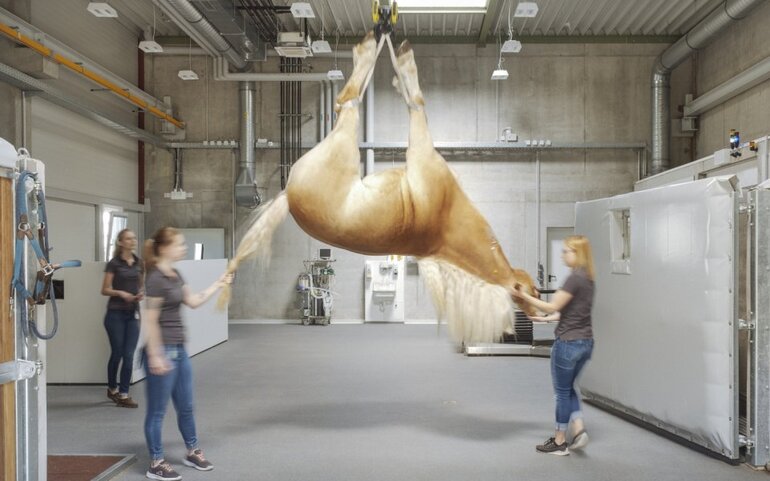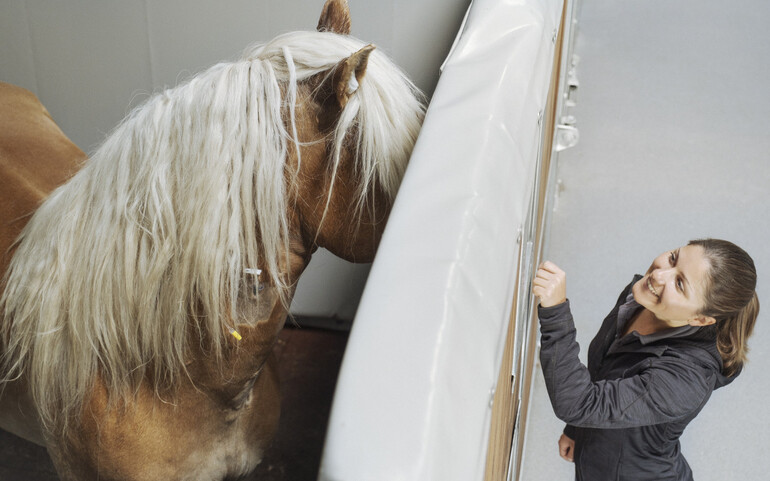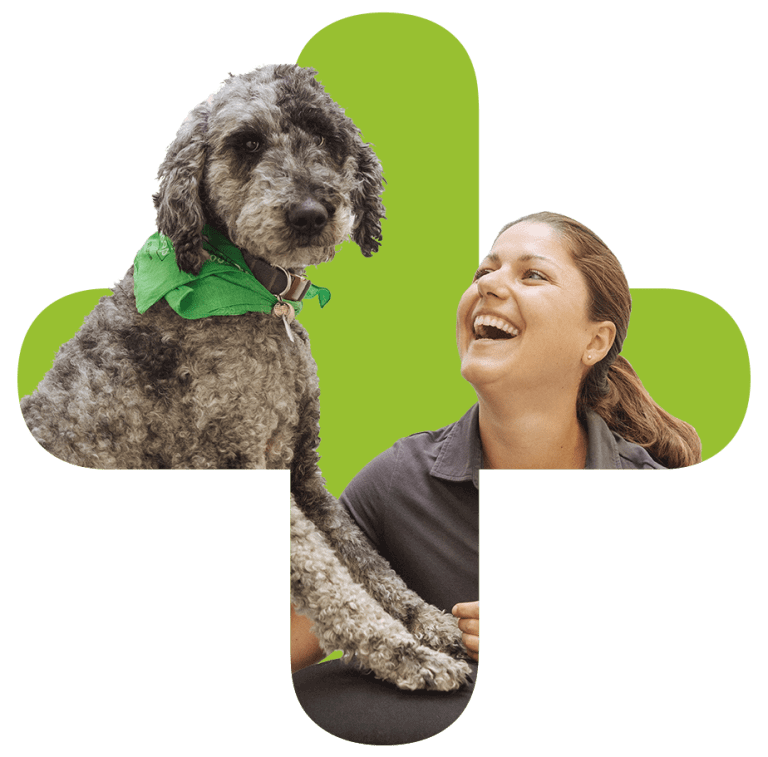Step 10: Recovery in a Quiet Environment
Even after getting up, the patients often stay in the recovery boxes for a while. Here it is quiet, warm and the animals are under constant observation, directly or via a camera system. The horses can continue to regain their strength before they are allowed to return to the stable and make contact with their conspecifics. If the animals are particularly stressed, sweaty or tense after the anaesthetic, they can relax in a solarium in addition to personal care. As a rule, the animals can be exercised in our round pen again a few hours after the start of the treatment and have put the entire procedure behind them.
